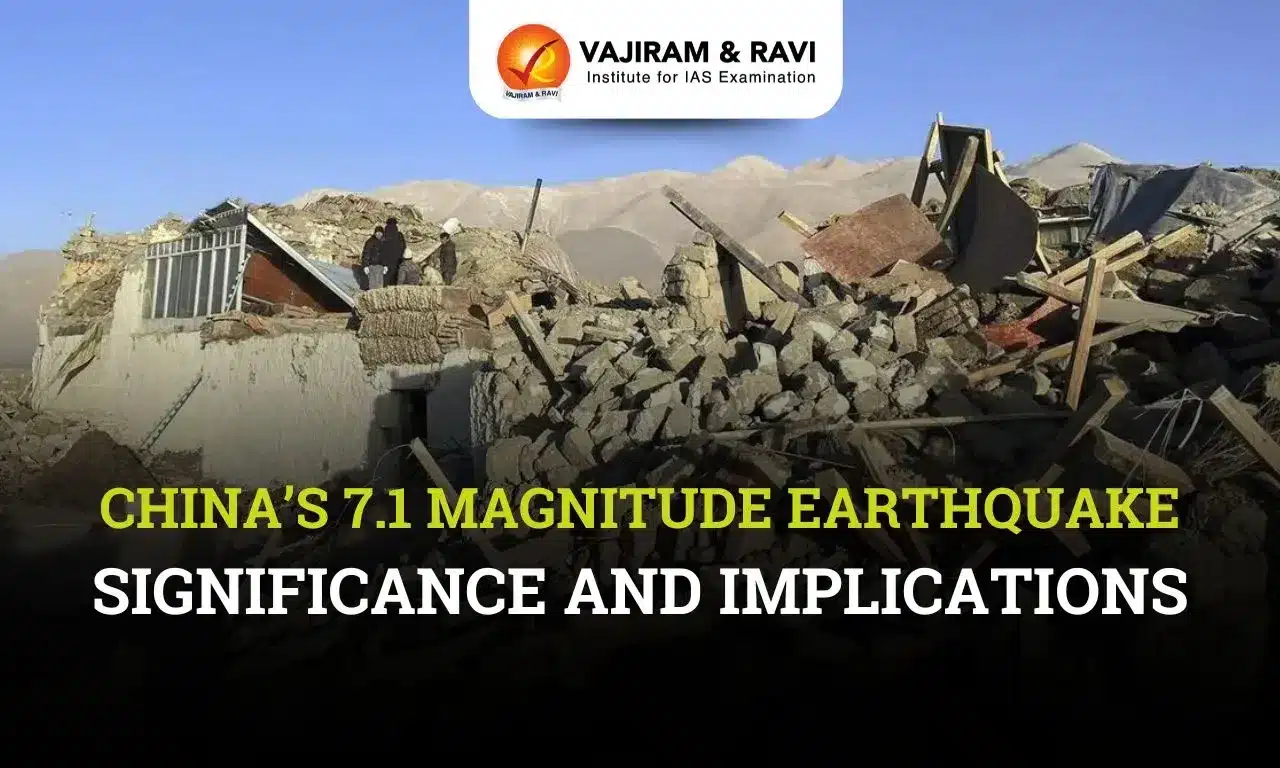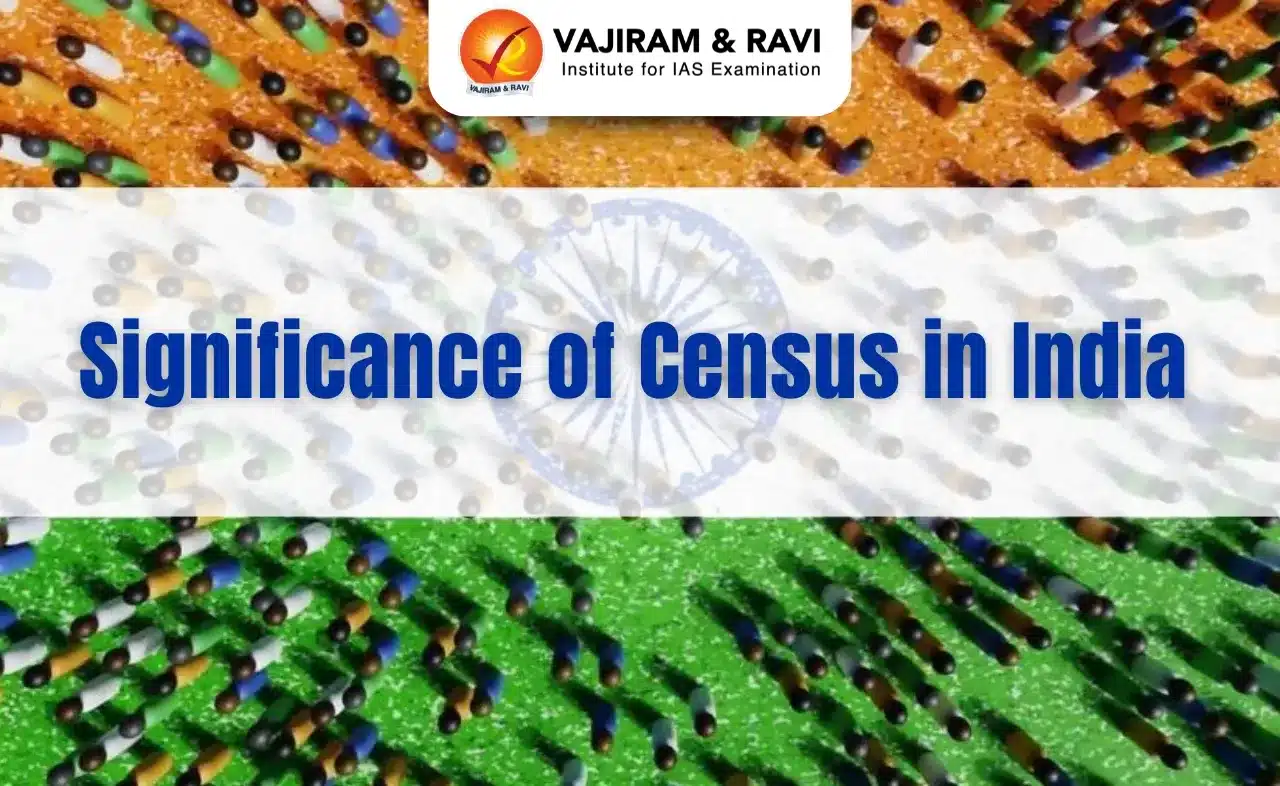What’s in today’s article?
- Background
- Why Does the Location of the Earthquake Matter?
- Causes of the Earthquake
- Implications of the Earthquake
- Key Takeaways
- Conclusion
Background
- On January 7, 2025, a powerful earthquake of magnitude 7.1 struck the Tibetan region of China and parts of Nepal.
- The epicentre was located approximately 10 km below the surface in Tingry County, Shigatse region, around 80 km north of Mount Everest.
- By evening, reports confirmed at least 95 fatalities, 130 injuries, and the destruction of hundreds of houses. Tremors were felt as far as Kathmandu (Nepal), Thimphu (Bhutan), and Kolkata (India).
Why Does the Location of the Earthquake Matter?
- Geographical and Cultural Context:
- Epicentre Location: Tingry County lies in the Shigatse region of Tibet, a high-altitude area averaging 4-5 km above sea level and home to about 800,000 residents.
- Cultural Significance: Shigatse is an important spiritual hub, housing the Panchen Lama of Tibetan Buddhism.
- Tourism Impact: Tingry serves as a gateway to Mount Everest. Although tourist numbers are lower in winter, the earthquake led to the suspension of tourist activities in the region.
- Proximity to Critical Infrastructure:
- Lhasa Terrane: The earthquake occurred in the Lhasa terrane, a tectonic fragment crucial for geophysical studies and development projects.
- Mega Dam Project: The region hosts China’s ambitious Yarlung Tsangpo River dam project, the world’s largest hydroelectric initiative, designed to generate 300 billion kWh annually.
- Concerns for India: The Yarlung Tsangpo becomes the Brahmaputra River in Arunachal Pradesh and Assam, raising concerns about potential impacts on water availability and flow.
- Environmental Sensitivity:
- The Himalayan region, often called the “third pole,” holds vast water reserves in its rivers, glaciers, and lakes, supporting millions of people.
- Earthquakes can trigger:
- River course changes: Past earthquakes have altered major river systems, like the Ganga in India.
- Glacial instability: Potential flooding due to destabilized glaciers and lakes.
Causes of the Earthquake
- Tectonic Dynamics:
- Plate Collision: The Himalayas were formed 50 million years ago when the Indian plate collided with the Eurasian plate.
- Ongoing Tension: The Indian plate continues to push northward at a rate of 60 mm/year, causing stress and periodic seismic activity.
- Historical Seismic Activity:
- Since 1950, the Lhasa terrane has recorded 21 earthquakes of magnitude 6 or higher.
- Notable Event: A 6.9 magnitude earthquake struck near Mainling in 2017, highlighting the region’s vulnerability.
- Predictive Studies:
- Geologists monitor fault lines to anticipate potential earthquakes.
- For example, studies predicted the devastating 2015 Nepal earthquake, observing that the fault involved experienced significant events roughly 80 years apart.
Implications of the Earthquake
- Humanitarian Impact:
- Casualties: Loss of life and injuries underscore the urgent need for disaster preparedness in high-risk areas.
- Displacement: Many residents have lost homes, requiring long-term rehabilitation efforts.
- Environmental Risks:
- Hydrological Changes: Earthquakes can disrupt river systems and increase flood risks.
- Climate Sensitivity: Destabilized glaciers could accelerate regional warming impacts.
- Regional Tensions:
- India-China Relations: The proximity of the earthquake to the Yarlung Tsangpo-Brahmaputra basin raises concerns about water security and cross-border cooperation.
Key Takeaways
- Geological Importance: Understanding the dynamics of the Indian and Eurasian plates is essential to predicting future seismic activity.
- Infrastructure Concerns: Large-scale projects like the Yarlung Tsangpo dam need rigorous risk assessments to mitigate environmental and geopolitical impacts.
- Disaster Preparedness: Regional governments must enhance early warning systems and preparedness measures to minimize the human and economic toll of such disasters.
Conclusion
- The 7.1 magnitude earthquake in Tibetan China highlights the interconnectedness of geological, environmental, and geopolitical factors in the Himalayan region.
- Beyond immediate relief efforts, a long-term focus on seismic research, sustainable development, and international cooperation is crucial to safeguarding the region and its people.
Q1. What is the difference between Hypocenter and Epicenter?
Hypocenter: A hypocenter is the point within the Earth where an earthquake rupture starts. Epicenter: An epicenter is the point at the surface that lies directly above a hypocenter in the Earth.
Q2. What is the Asthenosphere?
The asthenosphere is a physical layer of the Earth that lies below the lithosphere. It comprises part of the mantle between 100 km and 250 km in depth.
Source : TH
Last updated on June, 2025
→ UPSC Notification 2025 was released on 22nd January 2025.
→ UPSC Prelims Result 2025 is out now for the CSE held on 25 May 2025.
→ UPSC Prelims Question Paper 2025 and Unofficial Prelims Answer Key 2025 are available now.
→ UPSC Calendar 2026 is released on 15th May, 2025.
→ The UPSC Vacancy 2025 were released 1129, out of which 979 were for UPSC CSE and remaining 150 are for UPSC IFoS.
→ UPSC Mains 2025 will be conducted on 22nd August 2025.
→ UPSC Prelims 2026 will be conducted on 24th May, 2026 & UPSC Mains 2026 will be conducted on 21st August 2026.
→ The UPSC Selection Process is of 3 stages-Prelims, Mains and Interview.
→ UPSC Result 2024 is released with latest UPSC Marksheet 2024. Check Now!
→ UPSC Toppers List 2024 is released now. Shakti Dubey is UPSC AIR 1 2024 Topper.
→ Also check Best IAS Coaching in Delhi






















